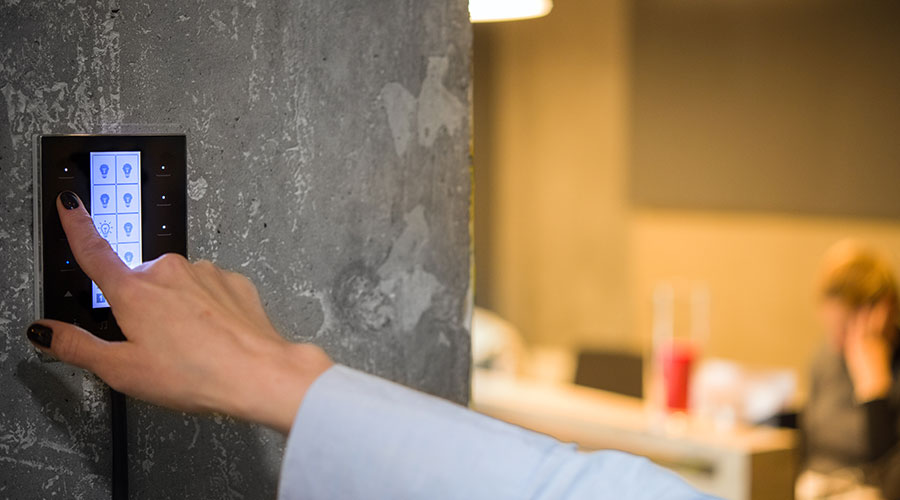Warehouses, Retailers Use EPAct to Earn Lighting Savings
The largest category of commercial property owners capturing EPAct benefits is national and regional retailers, for both stores and distribution centers. Most retailers manage from the center core and often have common or similar store layouts. Once they decide on an energy-saving initiative, they implement it across a wide section of their portfolio. Large retailers have felt the impact of the economic downturn, and many are curtailing new store construction programs and closing marginal stores. This is enabling these leaner retailers to focus their energy-cost-cutting initiatives on the retained stores.
For retail store buildings, the ASHRAE 90.1-2001 watts-per-square-foot standard is 1.9. However, for the room category of retail selling space, the ASHRAE 90.1-2001 standard is 2.1. This is an important advantage for retailers because it is easier to obtain higher tax deductions when using the latter standard. Many retailers are limiting existing store retrofits to the primary selling spaces.
Another category of EPAct projects is warehouses — single- and multiple-building projects with individual facilities ranging from 10,000 square feet to more than 1,000,000 square feet. Distribution centers particularly benefit from EPAct because the deductions are based on total square footage. The larger the space, the larger the incentive, and distribution centers are large facilities. The most common lighting retrofit is from metal halide lighting to fluorescent lighting fixtures where the energy savings alone are substantial. What’s more, while electricity costs are rising, the price of these lighting systems is decreasing, making the investment even more attractive.
Warehouses are the only listed building category where there is no partial tax deduction below 60 cents per square foot, and the owner must achieve a 50-percent-watts-per-square-foot reduction from ASHRAE 90.1-2001. Because this is an all or nothing category it is crucial to review the lighting design in advance. EPAct qualification will hinge on the fixture density of the design. Merely doing a one-for-one replacement of existing fixtures may not be sufficient.
In some cases, warehouse aisles are so narrow that the required lighting density makes it impossible to gain EPAct tax benefits. Warehouse owners are increasing their use of occupancy sensors so that with seasonal product lines and slow moving inventory the lighting is kept totally off when sections of the warehouse are not in use. This is a very cost-effective way to gain substantial energy savings.
Industrial and manufacturing facilities are a third category of buildings that are taking advantage of EPAct tax benefits. Again, these are large spaces where EPAct tax incentives based on square footage become particularly lucrative. When multiple manufacturing plants are involved, the plant manager often has unilateral decision making authority for investments with two-year or less economic paybacks. The EPAct tax incentive often drives payback below two years, making approval of lighting upgrades automatic. Again, replacing metal halide fixtures with fluorescent lighting is the most common project. The ASHRAE 90.1-2001 building standard for manufacturing facilities is 2.2 watts per square foot, and designing a 25 percent wattage reduction is fairly straightforward.
Enclosed parking garages are a growing EPAct category. In Notice 2008-40 issued March 7, 2008, the Internal Revenue Service made it clear that although parking garages are often unconditioned spaces they are eligible for EPAct tax deductions. There are numerous parking garages in urban environments, and electricity for lighting is the primary building energy cost.
It is quite common for multifacility property owners to learn how EPAct works with one building and then apply the same process with their remaining facilities. Island Architectural Woodworking has three manufacturing plants on Long Island, N.Y., including a new plant completed in 2007. After obtaining EPAct lighting tax deductions for its new building, Island is now applying EPAct to the lighting retrofit of its two existing facilities.
Charles Goulding, an attorney and certified public accountant, is president of Energy Tax Savers, Inc. Jacob Goldman is an engineer and tax consultant and Nicole DiMarino is an analyst with the firm. Energy Tax Savers Inc. is an interdisciplinary tax and engineering firm that specializes in the energy efficient aspects of buildings.
Related Topics:














